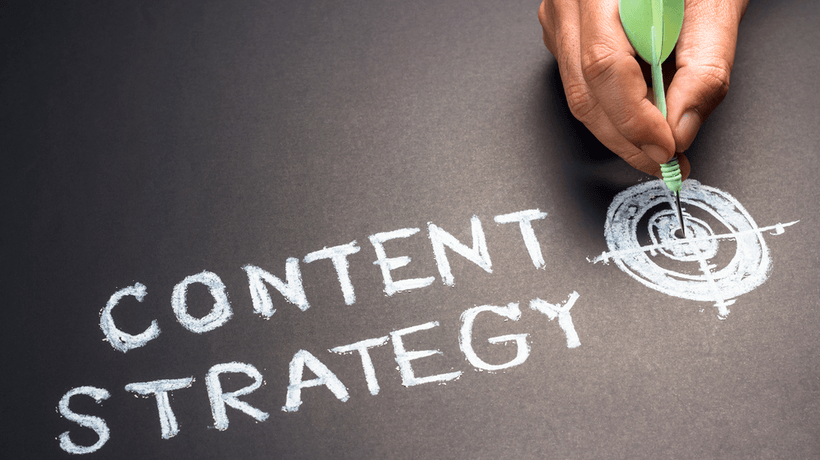How eLearning Helps You Amplify Your Content Strategy
With eLearning becoming vastly popular with the advent of the COVID-19 pandemic, content marketing trends have changed significantly. Knowing the types of content that connect well with their audience can help marketers create successful content marketing strategies.
eLearning Content That Enhances Your Content Strategy To Drive Maximum Results
Content marketing has proven the most successful way to promote and educate a user about a product, service, or business. As a result, nearly 70% of marketing specialists invest heavily in content marketing, building entire strategies centered on quality content.
But building an efficient content strategy that drives leads can be pretty challenging. Companies today face a lot of competition. With so many types of copywriting and other content at your disposal, choosing what to include in your strategy to stand out can be tricky.
Let's look at how the concept of eLearning has changed over the years and the types of content that are popular among consumers today.
The Evolution Of eLearning Through The Years
The concept of electronic-based learning systems began in the late 1980s when CBT or computer-based training first came into the limelight. Over the years, as technology got cheaper and personal computers became more common, electronic learning material was available quickly. Stored on the commonly available floppy disks or their comparatively modern counterpart, CDs allowed people to learn new information via a computer.
The late 1990s and the early 2000s saw the rise in popularity of the internet, and soon the concept of CBT evolved into WBT or web-based training. As the years passed and more people started to embrace the idea of accessing information via the internet, the term "eLearning" was born.
Today, eLearning refers to all kinds of digital content that educates or informs its consumers. It includes textual content, audiovisual content, infographics, and more. However, not all of these content types can have the same impact on their viewers.
Listed below are four highly versatile content types proven to drive results from a variety of business niches. Let's have a look.
Content Types That Have The Strongest Impact
Each type of content fulfills a different purpose, and as such, it has a different impact. However, the four formats of informative content listed below are some of the most powerful content driving your brand's most significant number of leads.
Blog Posts/Articles
Blogs and articles are some of the most popular styles of eLearning content. A well-written blog or article can educate better than a textbook. It allows us to cover a micro-topic in its entirety without confusing the consumer with extra information. Moreover, they contain links to relevant content references within their body, which allows a reader looking for more details on the subject to do so quickly.
An average informative blog post contains a mix of text and visuals, including graphs, infographics, and more to emphasize the point you were hoping to make. The structure is focused on improving the article's readability to guide the reader to the end of the blog easily.
Moreover, blogs and articles can be arranged into series or clusters to attract a reader into becoming a repeat visitor to our website. It is an essential benefit from the content marketing aspect, as it allows us to influence visitors into converting.
eBooks
Books and learning have gone hand in hand for centuries now. And with people today rapidly shifting to digital mediums for information, books have gone digital. Called eBooks, they are another popular mode of eLearning content.
An eBook is generally longer than an article or a blog post. It can inform a reader about an elaborate topic or educate them on a cluster of related issues compiled within a single document.
Offering high-quality eBooks as an incentive to sign up to your mailing list can be a great source of attracting leads, especially if the topic/s they cover are in high demand. Moreover, they can convert leads, primarily when used as the last stop on a customer conversion journey of a content marketing strategy.
Podcasts/Webinars
Podcasts and webinars are popular audiovisual content styles that can benefit an eLearning content strategy immensely. Podcasts are styled to mimic radio shows where an expert discusses a topic in detail. While usually conducted on a schedule, podcasts are recorded as well for the subscribers' convenience. Usually available for free on the internet, you can generally find various podcasts on any given topic.
Webinars are precisely what their names suggest: seminars on the web. However, while remote learning has been rising in popularity for some time now, the last couple of years spent in the pandemic have popularized the concept of virtual educational sessions.
Like physical lectures and sessions, virtual seminars focus on explaining their content via a video feed, with live feedback from their viewers. This type of interactive session is excellent at developing a connection with your consumers, especially when it comes to eLearning.
Video Content
Video is a popular style of visual content that educates your consumers by providing better engagement than text or static imagery.
These videos can be live-action or animated and they use a collection of video clips mixed with various graphics like infographics, graphs, and static images. These make your video interesting, informative, and, most importantly, engaging.
There are a few factors to consider to ensure that your video has the maximum intended effect. First, the length of the video should not exceed 6-7 minutes, as longer videos tend to lose their viewer's interest. Secondly, make sure that the video snippets supplement the graphics and that text is added to the final video.
Moreover, video hosting platforms like YouTube and Vimeo allow your viewers to ask questions or leave feedback, which helps to start discussions and build communities.
What Does All Great eLearning Content Have In Common?
No matter the type of eLearning content you create, all examples of good content have a few things in common. First, no matter how high the quality of content you deliver, it's of no use if it fails to answer the consumer's questions.
The hallmarks of relevant, quality content are:
Highly Relevant
Any piece of content developed for eLearning needs to be highly relevant to the topic. That can be done by breaking down the content and focusing on a single topic at a time. Then, it will help your viewers understand and retain that information better.
Structured Content According To Expertise
Another essential feature of good quality content is structuring information in the content based on the viewer's level of expertise. Essentially, the content should be structured to "must-know" comes before the "would help to know." Thus, it will help guide a reader.
Highly Engaging
Understandably, one of the defining features of good content is that it is engaging to read. In addition, an exciting piece of content ensures a steady stream of leads, thus helping your content marketing strategy succeed.
Conclusion
Using the types of content described above to build your eLearning content marketing strategy, an innovative marketing specialist can maximize their ROI and bring in a steady flow of leads. eLearning is fast becoming a significant industry in the content world, and marketers need to adapt to these changes to develop new marketing strategies designed specifically for them.









